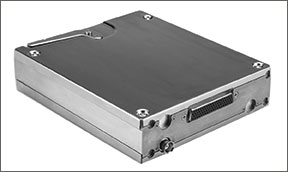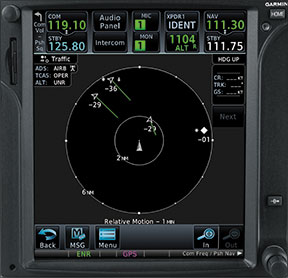Judging by the letters and calls we get on a regular basis, ADS-B continues to create head-scratching confusion. While shops report an increased interest in ADS-B retrofits, owners aren’t flocking to them in large numbers to have the work done.

While it’s easy to advocate a wait-and-watch approach to upgrades, it’s also easy to speculate that the January 1, 2020, ADS-B equipage mandate will be extended. There’s no evidence this will happen.
We do suspect that if you wait too long, you’ll risk paying higher labor costs for installation, as busier shops increase overhead to keep up with increased demand.
In our view, now seems to be a reasonable time to consider upgrading. There’s plenty of competition and options to keep prices stable, and shops aren’t flat-out trying to meet the equipage demand.
Here’s a current look at the products that are ADS-B compliant and certified, although there are others that could be available by the time you read this. That’s how quickly the market is developing.
Mode c mentality
That’s what you might use when qualifying your aircraft for an ADS-B upgrade. Chances are you’re gonna need to upgrade. Think in terms of installing additional equipment for flying in controlled airspace, while still retaining the existing Mode A and C capability. That’s because the ADS-B airspace conforms roughly to where Mode C altitude reporting is now required: Class A, B and C airspace or in any airspace above 10,000 feet MSL.

No matter how many times it’s explained, ADS-B theory (1090 versus 978, for one) remains confusing. Which equipment you buy will generally depend on how high you fly. Here’s another summary.
Due to frequency congestion concerns, the FAA designated two ADS-B frequency bands (dual link network). There’s 1090 MHz (the same frequency where transponders operate) and 978 MHz, known as UAT, for Universal Access Transceiver.

UAT—with its sizable bandwidth—promises more growth potential because it enables ADS-B reception for free FIS-B weather and TIS-B traffic, while also sending the required position pulse—the reason for satisfying the mandate in the first place. Ultimately, you’ll likely make use of both bands, depending on how much ADS-B you need and the services you want. If you own a portable ADS-B receiver, you’re already using 978 technology to receive weather and traffic services. This portable technology is a keeper, but does nothing to satisfy the mandate.
Aircraft operating above 18,000 feet will have no choice but to broadcast ADS-B on 1090 MHz, via a 1090ES Mode S transponder. But that won’t get you the free weather service and other promised capabilities, including planned text messaging. You’ll need the bandwidth of a UAT system for that. Fly below 18,000 feet and you can get by with a one-box UAT solution. That means transmitting and receiving on 978 UAT.
On the other hand, if bare bones compliance is your plan, a 1090ES transponder could be the easiest to retrofit because it can take the place of your existing Mode A and C unit. In many cases it can use the existing L-Band antenna system. The market seems flooded with these transponders, as you can see in the chart on page 6.
The rub, however, is the need for an approved WAAS GPS navigator. Since ADS-B requires a WAAS position source (and not all GPS receivers meet the specifications in the mandate), a sizable portion of the interface is interfacing the GPS with the 1090ES transponder. That can be a costly proposition for lesser aircraft not equipped with a panel GPS. Classics might not have panel space or substantial electrical systems to support one.
As for cockpit displays, ADS-B output doesn’t require one. But to see the FIS-B weather and TIS-B traffic, you’ll need one. An easy solution might be a tablet computer connected in a semi-portable wireless installation.
FreeFlight’s portable Wi-Fi transmitter connects to the company’s RANGR ADS-B receiver and streams weather and traffic data to the iPad. Interfaces like this could solve the panel space challenges in smaller aircraft.
Freeflight
FreeFlight’s RANGR 978 is our top pick UAT uses the Capstone Data Interface protocol. This is a generic interface standard that was developed and proven for over a decade in the Capstone ADS-B program in Alaska.
The FAA published the standard in hopes of promoting interoperability between different types and brands of ADS-B avionics and displays. Smart thinking, no?
In a nutshell, the protocol defines technical requirements for RS-422/RS-232 serial data connections between cockpit displays and ADS-B datalink radios receiving traffic and weather broadcast services. It’s also referred to as the GDL 90 interface protocol, since Garmin/UPS-AT developed it and the GDL 90 UAT receiver for Capstone. We should note that Garmin has since chosen not to adhere to the standard, instead adopting a proprietary interface protocol for its newer GDL 88 receiver.
The FreeFlight RANGR, which starts at $2580, is available in various configurations, including one with built-in WAAS GPS. FreeFlight’s Jessica Power made it clear that the company can configure a box virtually any way you need it.
“Unlike some of our competition’s boxes that overequip for some missions, the RANGR 978 can be configured for the type of flying you do. For example, if the aircraft flies above 18,000 feet, it needs a 1090ES transmitter. There’s no need to equip it with a 978 UAT transmitter as well. What we can do, however, is provide a 1090ES solution for output and a 978 UAT receiver to receive traffic and weather,” she told us. That 1090ES solution is the FreeFlight FDL1090—a Trig TT22-series transponder that wears a FreeFlight nameplate.
We suspect the competition Power is referring to is Garmin. Its GDL88 is both a UAT transmitter and receiver and isn’t configurable as a receiver only. We’re not sure that’s considered overequipped, but it can be more equipment than some aircraft need.
Garmin
The GDL88 isn’t Garmin’s only solution. There’s also a 1090ES option with the GTX330ES transponder. It can be purchased outright for $4389 or an existing GTX330 transponder can be upgraded for $1200. We suspect this unit will be the dominant 1090ES solution, given the large number of GTX330 units in the field. This is the unit that receives TIS traffic data and overlays it on a variety of displays. The GTX330ES works much the same way, except it outputs ADS-B. The GTX33ES is the remote version.
Speaking of dominant, the Garmin GDL88 seems to be the most popular retrofit UAT system, based on our discussions with several avionics shops. One shop told us it installs a GDL88 along with almost every major Garmin installation, especially with the GTN touch screen navigator.
A one-box 978 UAT solution, the GDL88 is also capable of interfacing with a variety of ADS-B Out compliant transponders and assuring that the same squawk code is being transmitted by the transponder and the UAT equipment without an awkward separate control box.
The dual-linked receiver in the GDL 88 means it receives all traffic data on all ADS-B Out-equipped targets in the area, no matter whether they are transmitting via transponder on 1090 MHz or UAT on 978 MHz. The GDL 88 comes in four versions. For aircraft with a WAAS GPS source and not desiring what’s called diversity (that’s a system that uses dual L-Band antennas—one on the top and one on the bottom of the airplane for better performance), the basic GDL 88 is $3995. If the aircraft already has an approved WAAS GPS source, the GDL 88 with diversity is $4495. A unit with built-in WAAS GPS and without diversity is $5143. The GDL 88 with WAAS and diversity is $5643. These prices do not include L-Band antennas and two are required for diversity models. It does, however, include a WAAS GPS antenna. We should note that the FreeFlight system comes with dual antennas.
As for GPS compatibility, the GDL88 can be connected to Garmin’s GNS500/400W-series navigators with software version 5.0 or greater and with the current line of GTN-series navigators. The GNS480/CNX80 isn’t approved. Since the GDL88 is a UAT receiver, it can display both ADS-B traffic and FIS-B weather on select Garmin panel displays, including GNS, GTN and MX/GMX-series systems. It won’t display on tablets.
Trig avionics
The TT21 and the TT22 are perhaps the smallest mode S transponders on the market with 1090ES ADS-B output. These models use two pieces: a control head that’s installed in the panel and a remote transceiver. An altitude encoder is built in to the controller (a welcome move). The controller uses an LCD screen and squawk code, and Flight ID input duties uses a conventional rotary knob. We’ve flown with these transponders and found them built to rugged standards. The controllers are even splashproof for water ops and open cockpits. Pricing starts below $3000.
Developing products
Our advice is to develop a working relationship with a shop now. It can help spec the best solution for your existing interface. If you need NextGen GA Fund financing, they’ll need to provide a detailed quote, as we describe on page 2 of this issue.
While it’s encouraging to see new ADS-B products come to market, it also makes the decision to upgrade now more difficult. There’s always the fear of something better and cheaper coming along, but that’s been the nature of avionics for years.
For example, Aspen Avionics is in the process of bringing a new line of ADS-B solutions to market and is expected to make a sizable announcement at this year’s AirVenture later in the summer. While Aspen couldn’t give us much details, the products will be the result of a partnership with FreeFlight Systems. Aspen told us its planned system will work with the company’s Evolution line of displays, in addition to other brands.
While Bendix King has a worthy solution with its KT74 1090ES ADS-B transponder (designed as a partial drop-in replacement for the KT76-series transponders), we wouldn’t be surprised to see a similar relationship birth a few more products.
For now, our top pick for a 978 UAT solution is the FreeFlight RANGR, for its generic interface protocol and flexibility. If enhanced traffic overlay is your need, the dual-band Garmin GDL88 and GTN navigator combo excels with its Target Trend.
For 1090ES, upgrading an existing GTX330 transponder makes sense, especially if it’s interfaced with WAAS. If you’re starting from scratch and want bare-bones compliance, we favor the Trig/FreeFlight transponders.


